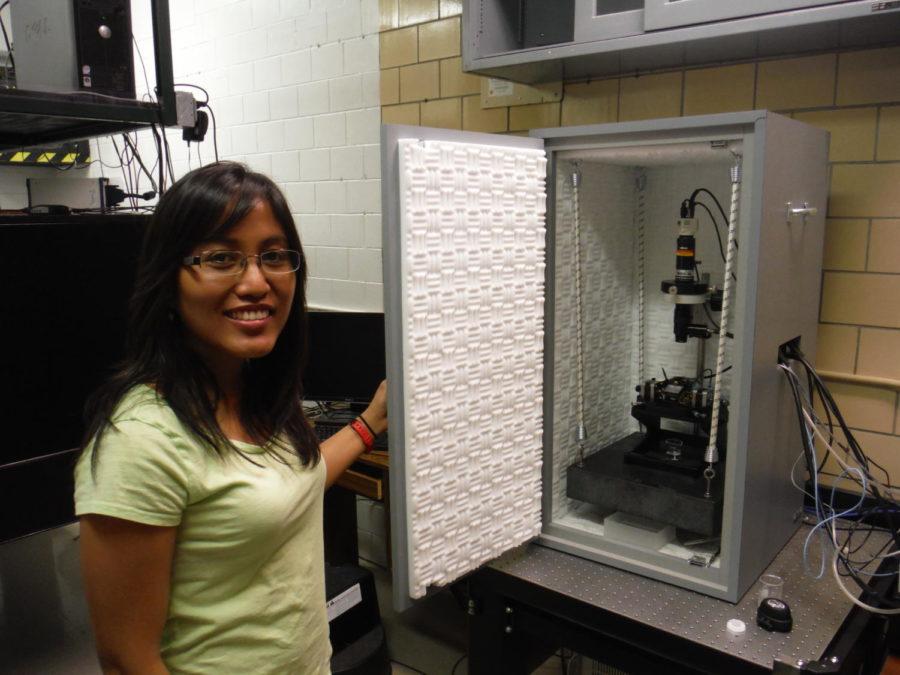ISU researchers discover new bond, hypothesize potential for disease cures
Co-Author Kristine Manibog poses with the atomic force microscope used in the research of catch bonds.
June 23, 2014
A new kind of cellular bond has been discovered by researchers at Iowa State. Called catch bonds, they may be important in keeping hearts functioning. When they break down, they may facilitate the spread of cancer to the rest of the body.
Sanjeevi Sivasankar, assistant professor of physics and astronomy and an associate of the U.S. Department of Energy’s Ames Laboratory, described catch bonds as “nanoscale seatbelts” and said when the proteins are pulled on, they become stronger.
Sivasankar said this behavior is the opposite of the expected natural reaction of the force weakening the bond.
Sivasankar is the author of a paper published online by Nature Communications, entitled “Resolving the molecular mechanism of cadherin catch bond formation.” Co-author Kristine Manibog, graduate student in physics and astronomy and student associate of the Ames Laboratory, is moving ahead with the research.
“The next step will be to find the … mechanism of ideal bonds,” Manibog said. “When you try to pull the proteins apart, [it] doesn’t matter how strong or how weak the force is.”
The paper was also co-authored by Sabyasachi Rakshit, of the Indian Institute of Science Education and Research in Mohali, India, and Hui Li, of the Suzhou Institute of Biomedical Engineering and Technology of the Chinese Academy of Sciences in Suzhou New District, China. Both are former postdoctoral researchers at Iowa State under Sivansankar.
Catch bonds are formed by adhesion proteins called cadherins, named for the term calcium-dependent adhesion. Adhesion is when two dissimilar materials stick together at a molecular level. These proteins are already known to play an important role in cellular adhesion.
Two rod-shaped cadherins can bind together in the shape of an X, a formation called an X-dimer. When pulled in the presence of calcium ions, they form catch bonds. When the ions or the force was removed in experiments, the catch bond formation also vanished, leaving the cells free to spread.
Sivasankar said that their findings are a step toward further discoveries and that any practical application requires more research. In terms of the role of catch bonds in spreading cancer, and the potential of their research in battling the disease, Sivasankar said he wanted to clarify that “it’s just a hypothesis” and has not been proven yet.
However, there may be other applications for the discovery. Engineers have occasionally turned to the advanced mechanisms of the human body to solve problems. He described catch bonds as hooks that resist force. “I could imagine many scenarios where this would be important in an engineering problem,” Sivasankar said.
Although Sivasankar could not say when or how this discovery might be applied to solutions for disease. He hopes to research the findings further and emphasizes the role of catch bonds in the body. “You can think of these cadherins as sort of the body’s glue,” Sivasankar said.
The team’s research was accomplished with the support of grants from the American Heart Association and the American Cancer Society.







